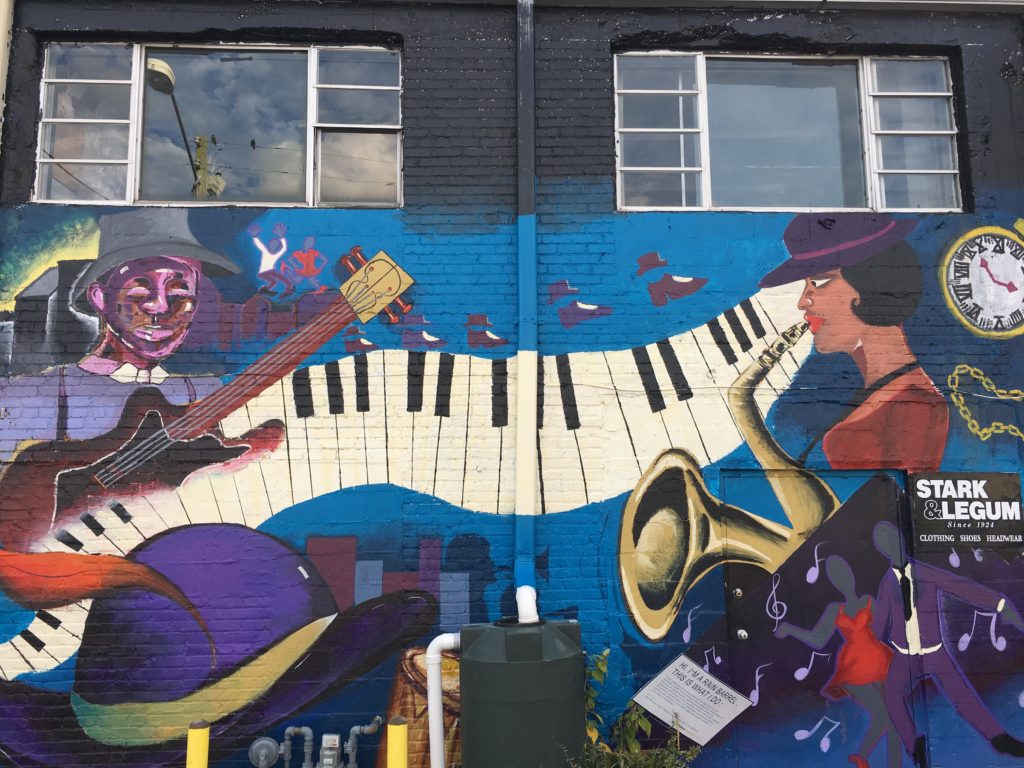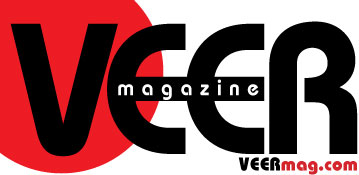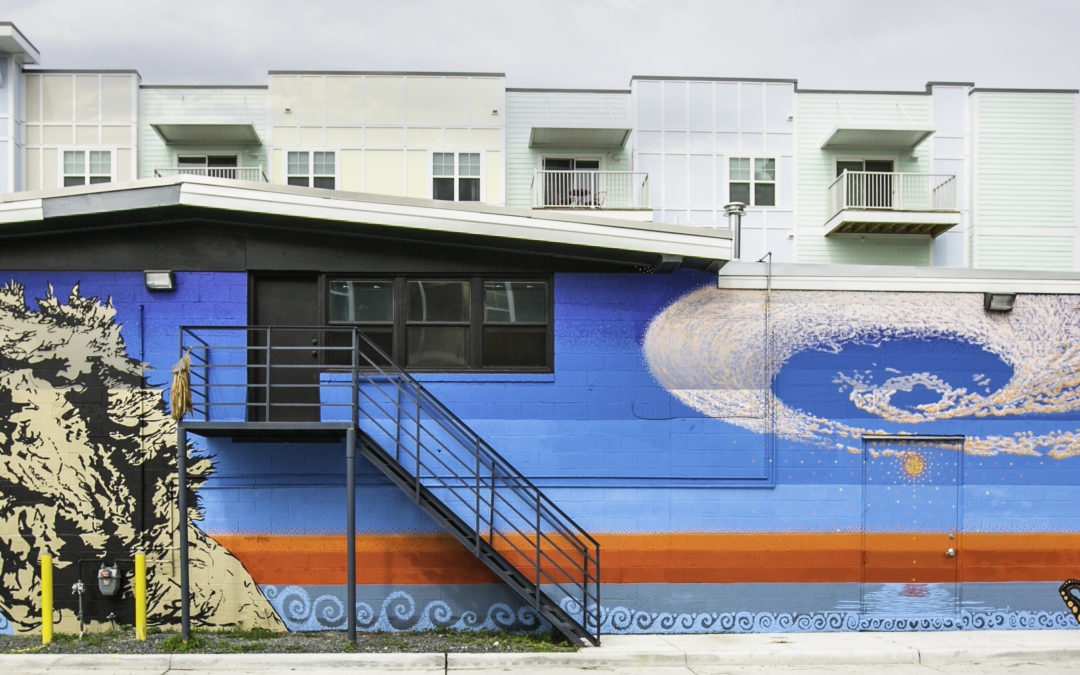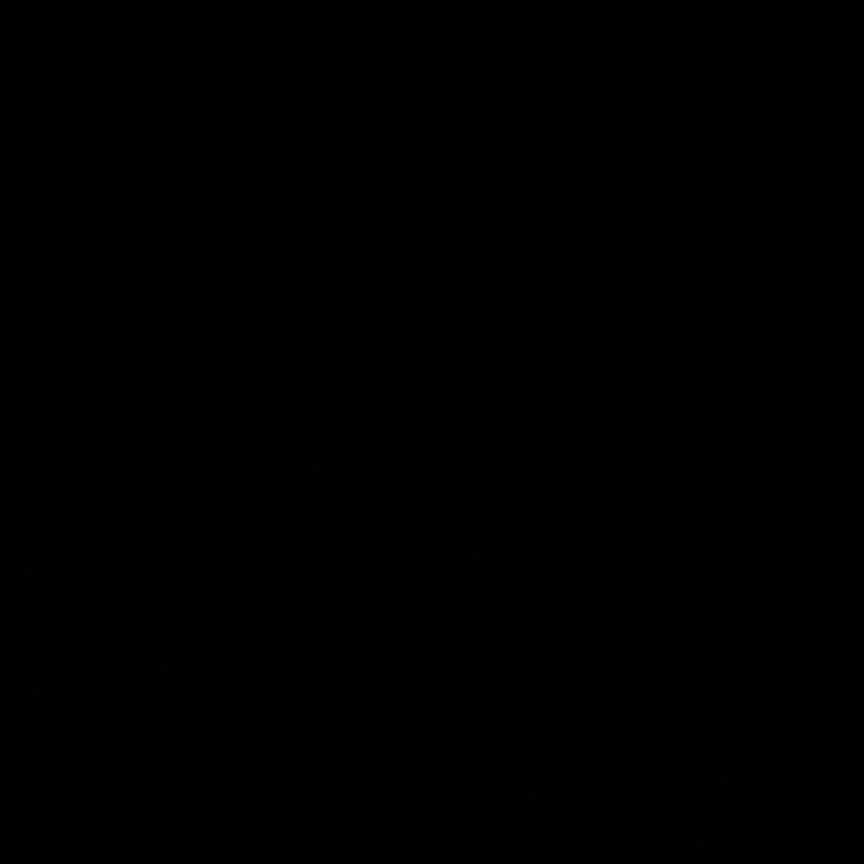(Artist Matt Brass’ “Neptune” at Vibrant Shore Brewing in the Virginia Beach ViBe District). Photo by Lori Golding Zontini
By Betsy DiJulio
When is a mural not a just a mural? When it is a driver of economic development, tourism, place-making, branding, legacy-leaving, and employment for artists just for starters. The recent proliferation of murals in Virginia Beach’s ViBe District and Norfolk’s NEON and Railroad Districts seemed a good time to understand a bit better who and what is driving this train.
Street art, including murals, is the people’s art, situated somewhere between what is perceived as the upper crust’s purview of galleries and museums and the grittier rebellious underworld of protest and graffiti art. Across the country, murals are key protagonists in the comeback stories of blighted urban areas like Detroit. But smaller and seemingly less blighted cities are jumping on the bandwagon.
My recent illustrated walking tour of the 15-block concentration of murals in the ViBe drew so much attention on social media that I started there. Chatting with Kate Pittman at Croc’s whose co-owner, First Citizen, Laura Habr, has been one of the longest-running and most passionate and persistent voices and vision-makers for the revitalization of the neighborhood, the patchwork of projects began to feel more cohesive: mural festivals, painted and permanent crosswalks, a changing fence mural, event-driven permanent and temporary murals like those for SITW, and pop-ups. Virginia Beach’s office of Cultural Affairs oversees the stand-alone mural projects on city-owned property.
Pittman, executive director of the ViBe Creative District, would agree with Detroit’s Mural in the Market co-founder, Jesse Cory, who asserts that a density of murals in a neighborhood generates stories around both the neighborhood and the artists. “We see it as a public good,” she says, emphasizing the murals’ ability to activate a sense of discovery and exploration throughout a neighborhood, putting more foot traffic on the streets, starting conversations, and driving an uptick in business. She credits Sean Brickell with bringing this idea to the ViBe.
There, property owners may, on their own, commission artists to paint murals. But, explains Pittman, not every business can afford to do that. By partnering with her office, businesses pay some 20% of costs and are presented with a “monster file” of artists from which to choose, solicited during an open call. Many districts around the country, including the ViBe, use the mural festival model, e.g. “10 murals in 10 days.”
In this way, a concentration of murals is commissioned, painted, and celebrated within a condensed amount of time and a condensed footprint, about a mile for 2019, the second year of the ViBe Mural Festival. They make a bigger initial splash and lasting visual impact, while creating opportunities for block parties and other programming from artists talks to guided mural walks and golf cart tours.

(“Hats, Music and Technology” on the side of Stark & Legum clothing store in the NEON District of Downtown Norfolk.)
Norfolk’s proliferation of murals predates those in the ViBe by a few years. In about 2013, Rachel McCall, special projects manager for the Downtown Norfolk Council, was tasked with helping to rehabilitate the arts district, aka NEON, part of a 50-block improvement area. Murals have played a key role via annual mural festivals that begin with open calls to artists in May and June, are funded in July, and completed by October for the NEON Festival which attracts some 4,000 people over two nights. Besides the obvious role in urban rehabilitation, McCall sees the mural programs as educating artists in a potentially lucrative form of business. They learn more about contracts, insurance, and logistics, like lift rental.
Property owners are invited to participate. “The more we do it,” says McCall, “the more they want to participate.” And, through an open call, artists are asked to submit designs on spec so that business owners can see more precisely what they are getting. Though this isn’t the preference of some artists, McCall notes that there are pros and cons to all models.
Meanwhile, in the Railroad District in Park Place, the Norfolk Street Museum emerged this year as its inaugural mural festival. Curated by Hampton Boyer and Asa Jackson of the Contemporary Arts Network, the initiative’s mission, in partnership with Visit Norfolk was, according to Jackson, to assist the city with “tourism and placemaking.” Ten muralists from the region and across the US created nine murals for businesses in the district who Boyer and Jackson selected through a very personal process of walking the neighborhood and creating a dialogue with owners who bore none of the financial costs.
Charles “Charlie” Rasputin and his Alchemy partner, Careyann Weinberg, served as producers for the Norfolk Street Museum with music performances, artist’s talks, meet-an- greets, and bike tours. A conversation with Rasputin revealed his long history as a driving force behind alternative art parties and immersive experiences where “art meets nightlife.” An artist/muralist, curator of non-traditional art shows, and event planner, what propels him is the desire to foster “emotional investment” in a diverse, creative community, that is welcoming to all ages and synthesizes both “feel good and protest art.” His mantra? “How do we make people care?”
The visual language that started decades ago as a protest against the establishment has now been embraced by—and funded by—that establishment, with municipalities enthusiastically getting on board with the mural movement. And, not surprisingly, when public funds are involved, the process intersects politics raising complex questions about the what, when, and where, but especially the who, becoming turfy at times.
“Murals are culturally trendy,” says Karen Rudd, manager of Cultural Affairs for the city of Norfolk. By definition, trends tend to come and go, but most importantly they lead in a new direction. It remains to be seen where the trend will take us denizens of the 757. But I’m along for the ride.
Find out more about grants for projects, download maps, and access open calls to artists at:
www.DowntownNorfolk.org, www.NorfolkStreetMuseum.com, and www.VibeCreativeDistrict.org.




